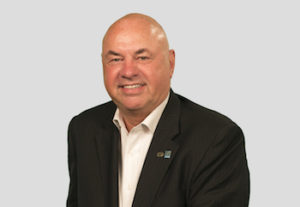The progression of heavy duty vehicle technology will make a dramatic difference in measuring a typical HD service shop business. The HD aftermarket will have to relearn this portion of the business all over again. You will find that a typical HD shop owner is going to require 6 to 8 days of management training per year moving forward. This labor measurement is one of the changes that will have to be relearned as the old way of setting and measuring labor rates will leave too much money on the table.
As commodity margins decline and HD vehicle software grows, everyone must understand where their management attention must be directed.
A redefined labor measurement will take place within the next year to maximum 2 year period.
A ?maintenance labor? category will be just that, pure maintenance work based on the manufacturers recommended service intervals and repairs of worn out or broken parts.
Diagnostic labor will be the analyzation of a situation or interpretation of information. (What is the problem, what caused it and what is the solution?)
Inspection labor will be all completed paid inspections.
Re-Flash will be strictly updating the vehicle from the OEM website.
Calibration labor will be a new category as the lining up of sensors after a repair has taken place will become an additional specialty skill within the HD shop. Software platforms will have to be understood.
The key information that will need to be understood is ?what will the mix of each labor category be within the shop?? This brings back the importance of key efficiency measurement for each category as specific training will have to be required and making sure the shop has the right skill set within the team to ensure professional execution of the services on behalf of the HD client. The efficiency measurement of each category will also help establish the billed hours per R/O.
Measuring the ?effective? rate will be critical in the labor mix measurement. How much labor should we be getting from each labor category to justify the staffing level?
All that being said another big change coming to the industry will be the setting of labor rates for each category. Labor rate multiples will change from what they are now based around the technicians hourly wage to working with the individual shops actual cost per billed hour.
Better ?job quoting? skills will have to be embraced because the knowledge for ?how? a job must be done and ?what kind of labor? is involved to complete the job to total client satisfaction must be learned.
As you can see, personnel development and business measurement will become more intertwined than ever before. All of these things combined will affect the net profit of the business.
Our heavy duty industry is changing so rapidly and dramatically and the reason for this is due to vehicle technology and technician competency that will be required to fix and maintain a vehicle properly.
I see this as just the beginning of so many changes coming to the heavy duty aftermarket sector within the next 1 to 2 years maximum. What will happen to the HD shops that don?t have a learning culture in their business or won?t want to re-learn and move in the direction they must? Time will not be on their side. It is this kind of change that will dramatically separate the heavy duty shops in a given marketplace.
As the business owner you want to be committed to keep ?ahead of the wave? and seek out the business knowledge you will need to keep the business moving forward. Hold on for the ride over the next 2 years, it will be a great one for the heavy duty shops that get it.

